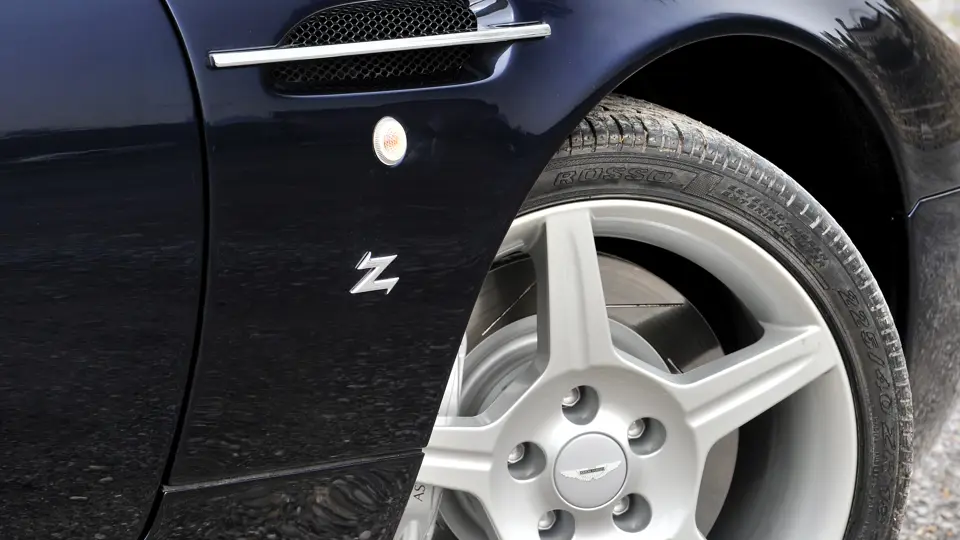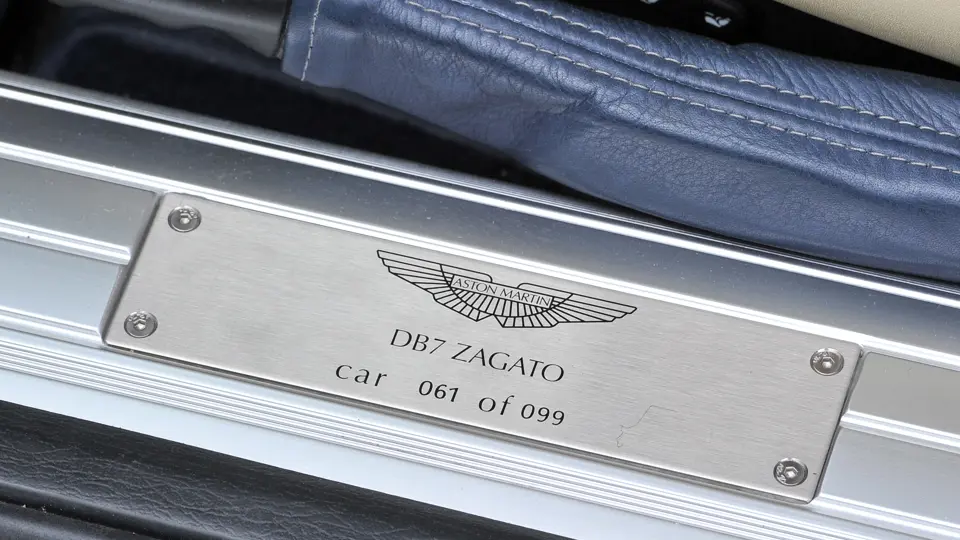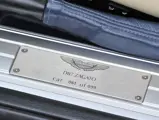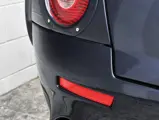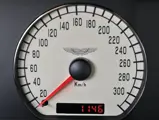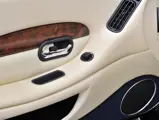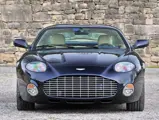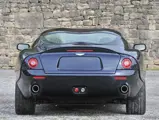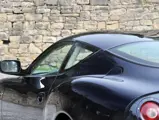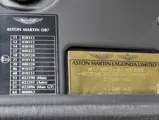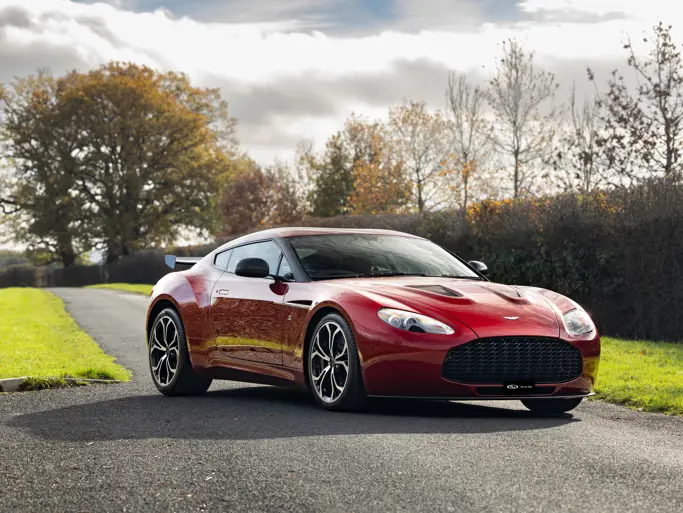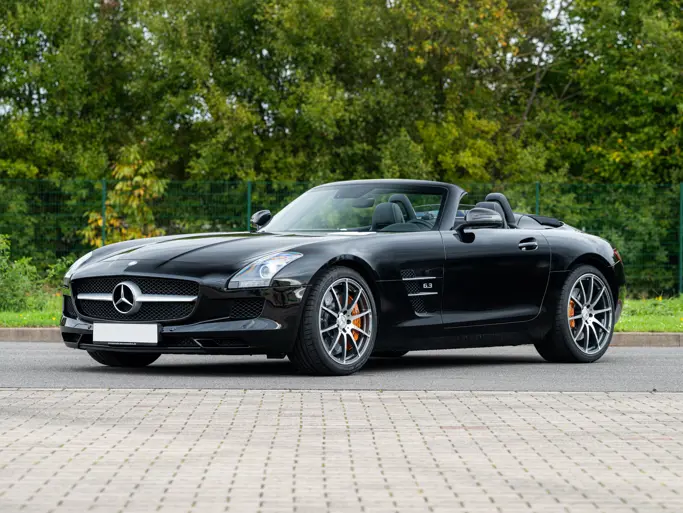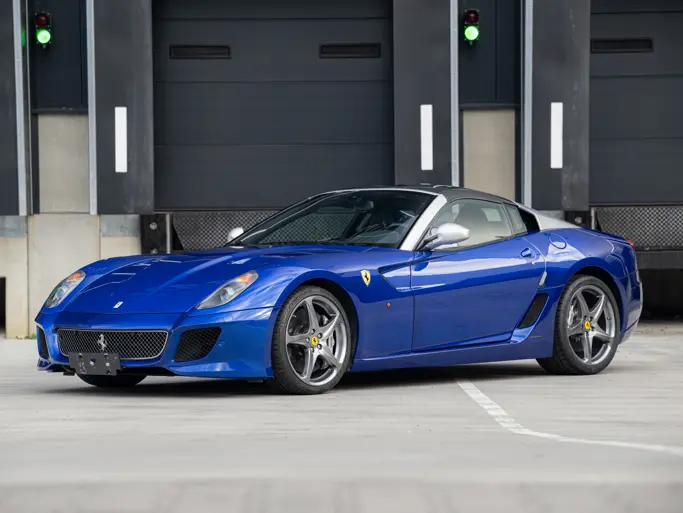
2004 Aston Martin DB7 Zagato
{{lr.item.text}}
€235,200 EUR | Sold
{{bidding.lot.reserveStatusFormatted}}
- The 61st of 99 examples built
- Single ownership and 1,100 kilometres from new
- Complete with all requisite books and tools
- Le 61e exemplaire des 99 produits
- Un seul propriétaire et 1 100 km parcourus d'origine
- Complète avec tous ses manuels et ses outils
435 bhp, 6.0-litre V-12 engine with four overhead camshafts and four valves per cylinder, six-speed manual transmission with twin-plate racing clutch, four-wheel independent suspension, and four-wheel Brembo disc brakes. Wheelbase: 2,590 mm
Moteur V-12, 6 litres, 435 ch, deux ACT par banc, quatre soupapes par cylindre, boîte manuelle six rapports avec embrayage compétition à double disque, suspension avant et arrière indépendante, freins Brembo à disque sur les quatre roues. Empattement: 2 590 mm.
Zagato’s long and illustrious relationship with Aston Martin began in 1960 with the DB4GT Zagato, which was a beautifully styled version of Aston Martin’s extraordinary grand tourer that had been bodied in featherweight aluminium. It was introduced at the 1960 London Motor Show, and only 19 examples would be produced. Today, these examples are considered to be the most valuable Aston Martins of all time. The DB4GT Zagato was largely influential to both Aston Martin and Zagato, and some of the design cues that debuted on this model would find their way into future Astons. Meanwhile, the car builder and the coach builder would team up twice more, in 1985, for the V8 Vantage Zagato, and in 2002, for the DB7 Zagato.
The DB7 Zagato was a design collaboration between Andrea Zagato and Henrik Fisker, who was Aston Martin’s chief designer at the time, and it was introduced to great acclaim at the 2002 Paris Motor Show. The chassis was shortened by 151 millimetres and the wheelbase by another 60 millimetres from the standard DB7, reducing the front and rear overhangs and cutting an estimated 130 pounds of weight. Most of the styling differences were found in the rear, with single, round taillights and a drop-down boot lid, and in Zagato’s trademark “double bubble” roof, with a similarly sculpted rear window. Inside, the car was blessed with a similarly lavish interior that had been upholstered in a special analine leather with quilted seats.
Production of the DB7 Zagato was limited to 99 examples, with them being allocated for the European, Asian, and British markets.
This DB7 Zagato was produced in 2004 and wears an elegant blue over cream colour combination and a plaque on its doorsills that proclaims that it is the 61st example of 99 produced. It has resided with its original owner in Italy since new, and it has travelled just 1,100 kilometres from new, making this example nearly factory fresh. Its leather interior is still sumptuous, and the gorgeous aluminium bodywork shows nary a flaw. Additionally, the car still retains all its original books and tools.
To many, Zagato’s design greatly improved upon what was already considered to be Aston Martin’s most beautiful car in years. Whilst the car retains special coachwork, the design is still quintessentially Aston Martin. As only 99 examples were produced, they are seldom seen on the open market, and it is even rarer to see one on the road. With only 1,100 kilometres on its odometer, all of which were accumulated in the hands of one owner, this DB7 represents an excellent opportunity to obtain an extraordinary piece of Aston Martin and Zagato history, and it is a splendid example of coach building in the 21st century.
Les relations de longue date entre Aston Martin et Zagato ont commencé en 1960 avec la DB4 GT Zagato, une version magnifiquement dessinée de l'extraordinaire Aston Martin de compétition-client, dotée d'une carrosserie en aluminium. Dévoilée au Salon de Londres 1960, elle ne sera produite qu'à 19 exemplaires. Aujourd'hui, ces voitures sont considérées comme les Aston Martin les plus recherchées et les plus chères de tous les temps. La DB4 GT Zagato a largement influencé Aston Martin et Zagato, et certains traits de style présents sur ce modèle ont été repris ultérieurement sur d'autres Aston Martin. Entretemps, le constructeur et le carrossier allaient se retrouver deux fois encore, en 1985 pour la V8 Vantage Zagato, et en 2002 pour la DB7 Zagato.
Le dessin de la DB7 Zagato est le fruit d'une collaboration entre Andrea Zagato et Henrik Fisker, qui était à l'époque directeur du style chez Aston Martin, et la voiture rencontrait un grand succès lors de sa présentation au Salon de Paris 2002. Par rapport à la DB7, le châssis était raccourci de 151 mm et l'empattement de 60 mm, ce qui permettait de réduire les porte-à-faux avant et arrière et de réduire le poids d'environ 59 kg. La plupart des différences de style était particulièrement notables à l'arrière, avec de simples feux ronds et un couvercle de coffre presque vertical, ainsi qu'au niveau du toit qui adoptait la fameuse double bosse chère au carrossier et qui générait une lunette arrière de forme très travaillée. A l'intérieur, la voiture bénéficiait d'un intérieur luxueux avec une sellerie en cuir aniline spécial et des sièges matelassés.
La production des DB7 Zagato s'est limitée à 99 exemplaires, distribués aux marchés européens, asiatiques et britanniques.
Sortie d'usine en 2004, cette DB7 Zagato est dotée d'un élégante combinaison de couleurs de bleu sur crème, avec une plaque sur les seuils de portes précisant qu'il s'agit du 61e des 99 exemplaires produits. Elle est restée en Italie entre les mains de son premier propriétaire depuis qu'elle a été vendue neuve, et n'a couvert que 1 100 km, ce qui en fait une voiture pratiquement neuve. Son intérieur en cuir est toujours aussi somptueux et la magnifique carrosserie en aluminium ne présente aucun défaut. Par ailleurs, la voiture est accompagnée de ses manuels et outils d'origine.
Pour beaucoup, le dessin de Zagato a considérablement amélioré un modèle qui était déjà considéré comme la plus belle Aston Martin depuis bien longtemps. Bien que la carrosserie soit spéciale, le style reste typiquement Aston Martin. Comme seulement 99 exemplaires ont été produits, il est rare d'en trouver une sur le marché, et quasiment impossible d'en croiser une sur la route. N'ayant couvert que 1 100 km, et de plus entre les mains de son premier propriétaire, cette DB7 représente une excellente opportunité de s'approprier une pièce de l'histoire d'Aston Martin et de Zagato. Elle représente de plus un exemple splendide de carrosserie spéciale du 21e siècle.




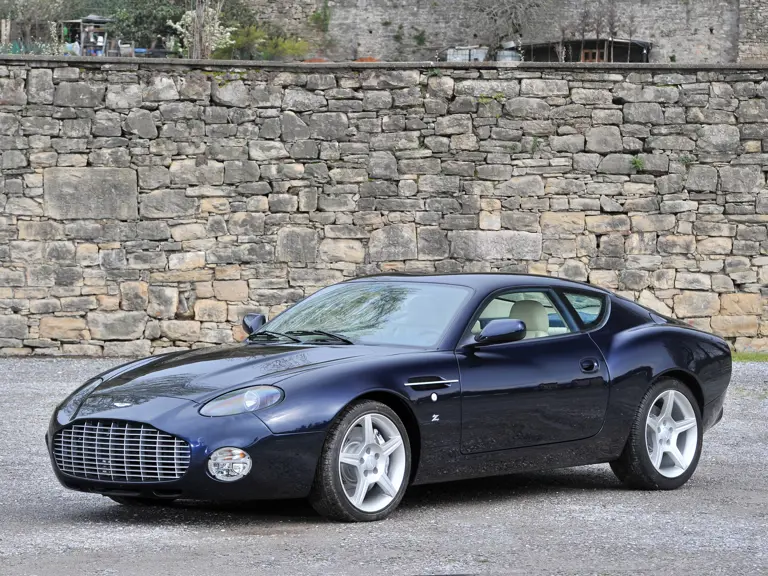
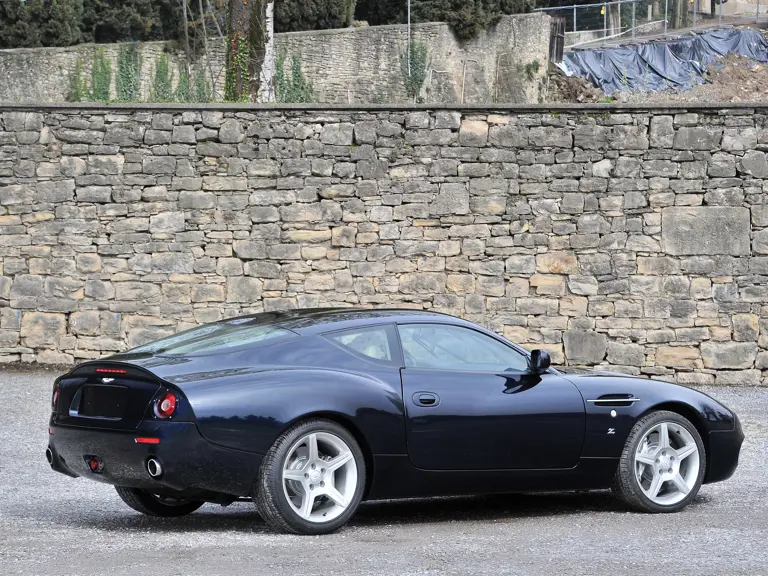
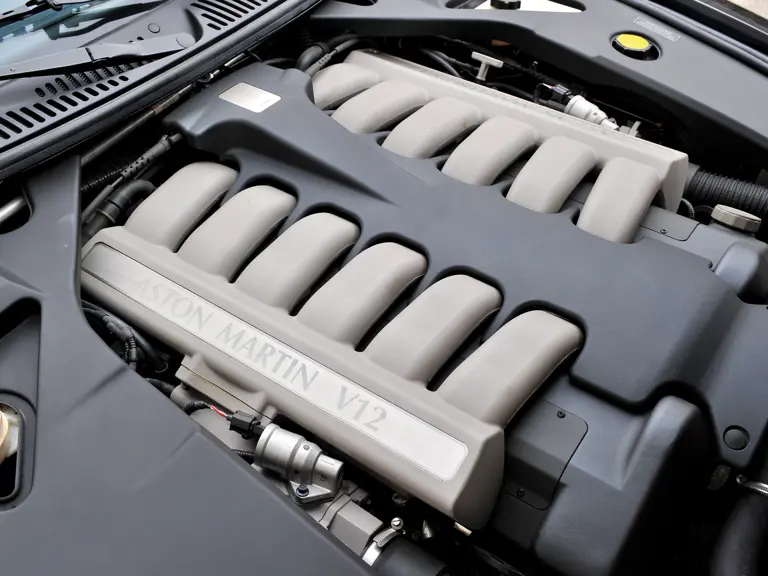

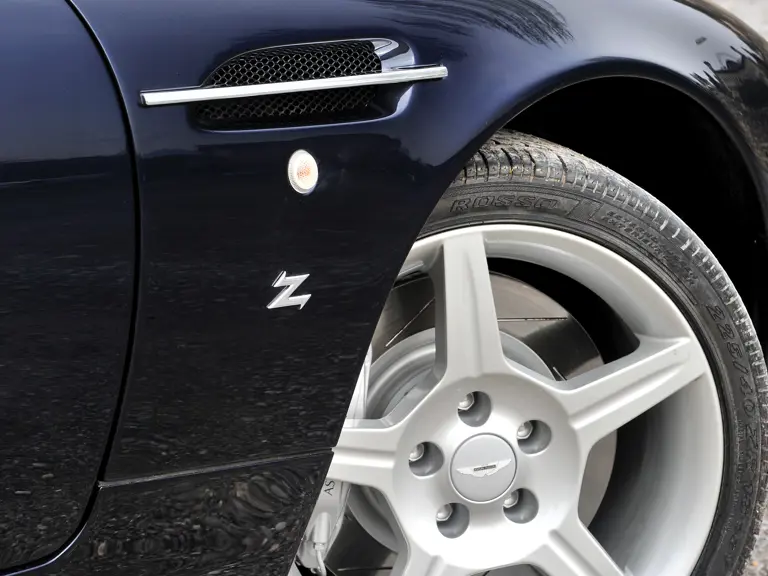
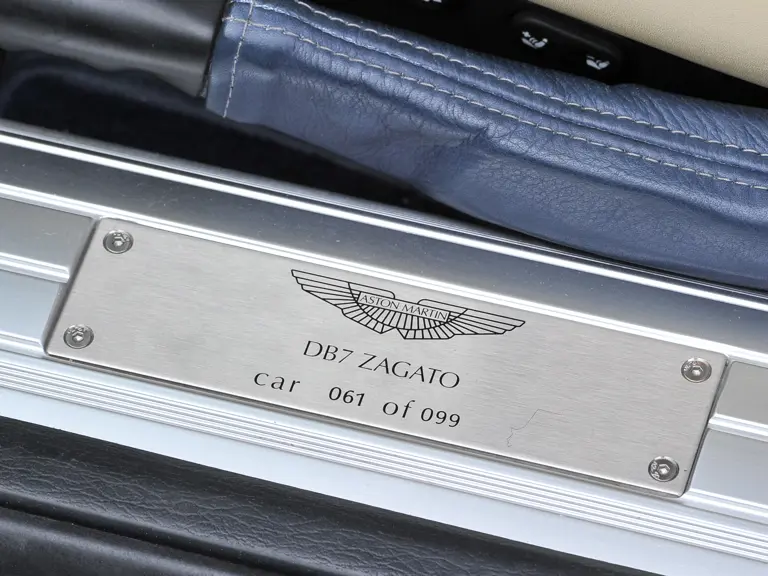
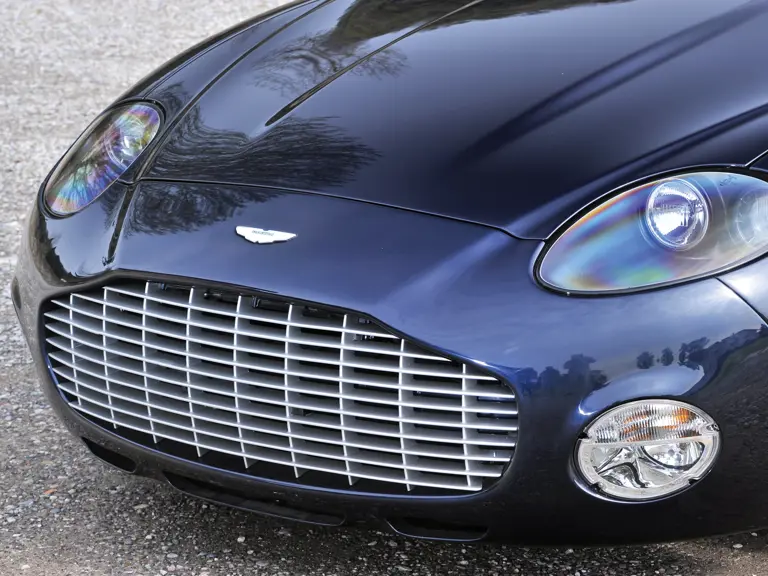
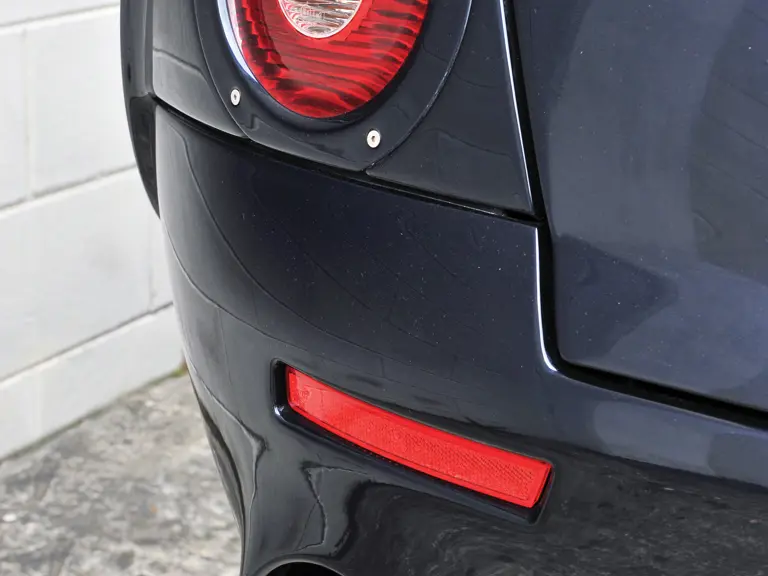

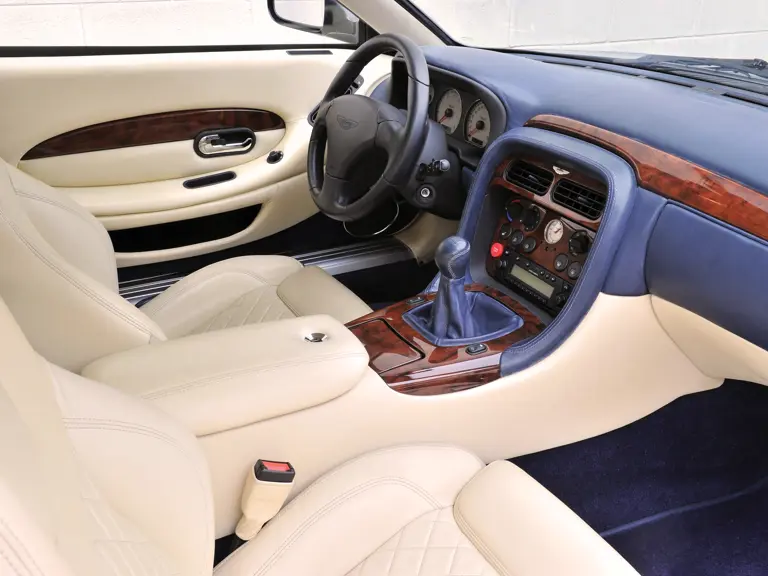

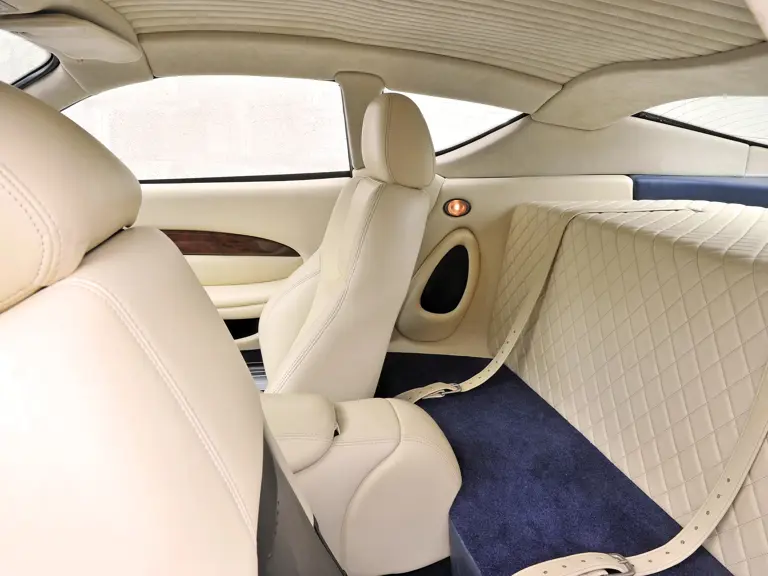
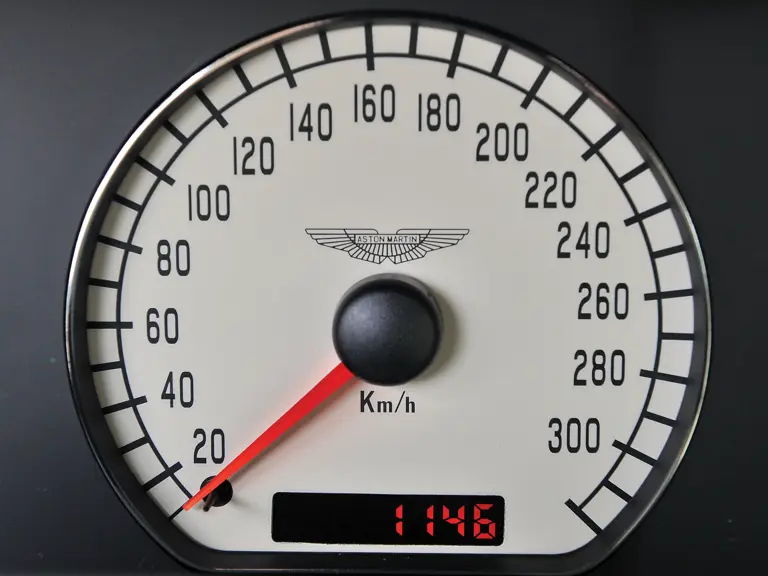
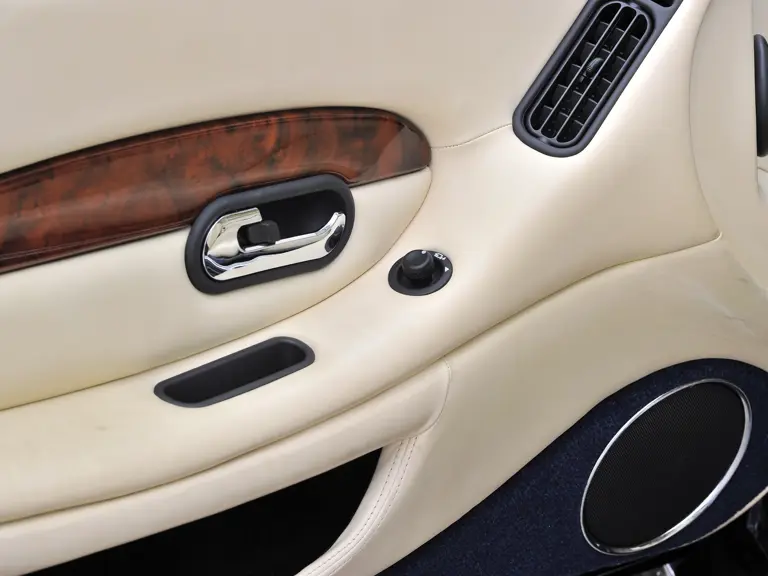

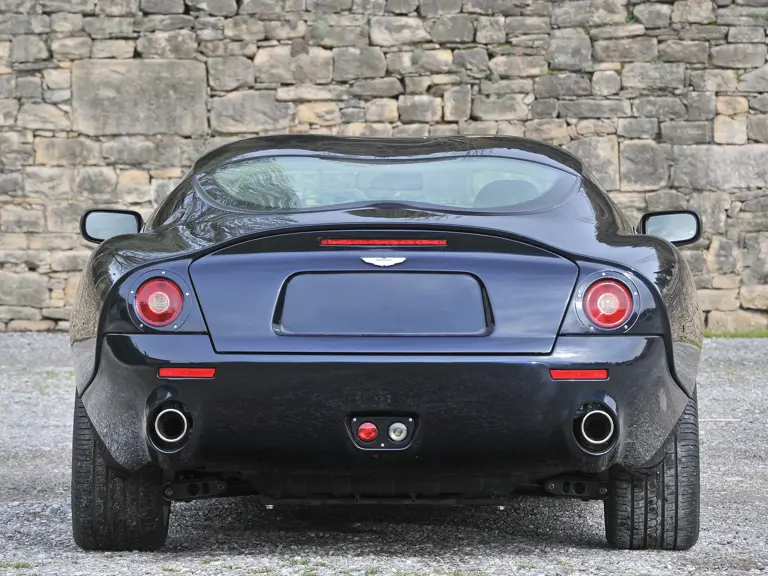
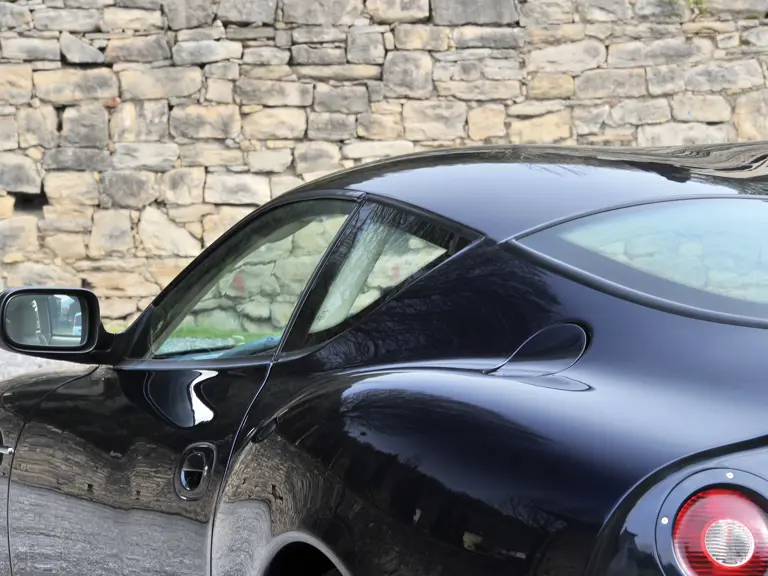
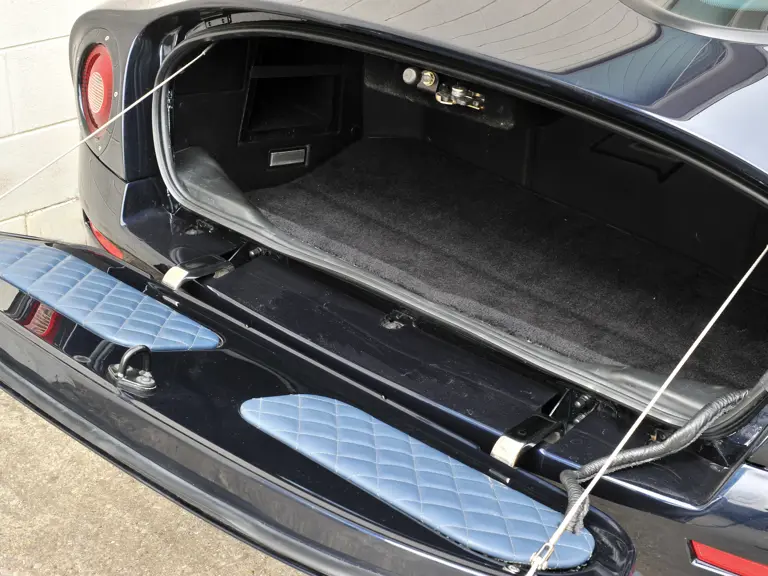
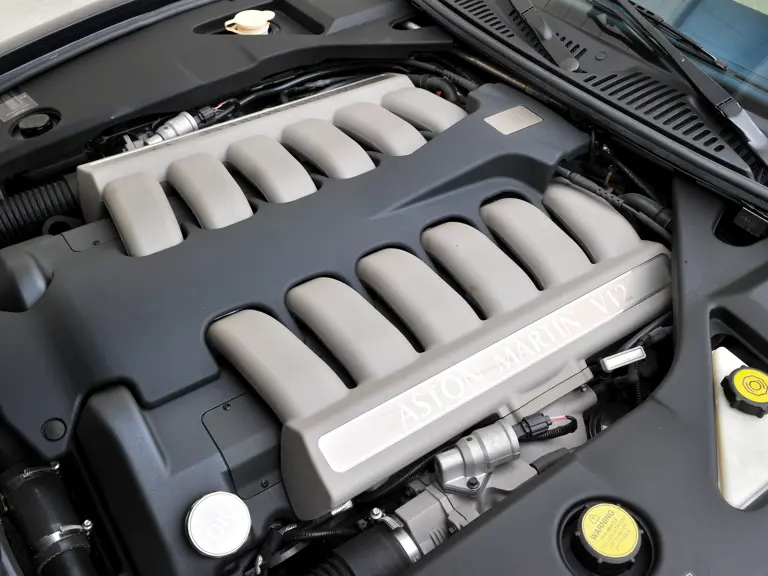
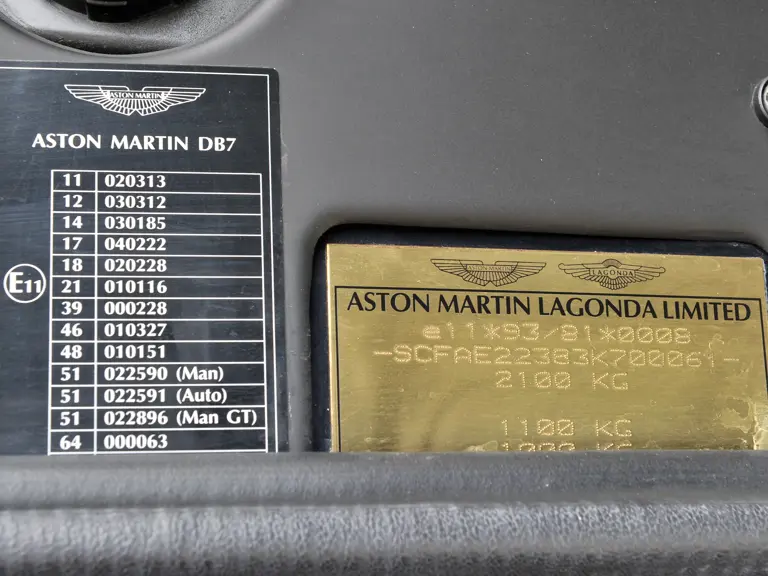
 | Monte Carlo, Monaco
| Monte Carlo, Monaco
